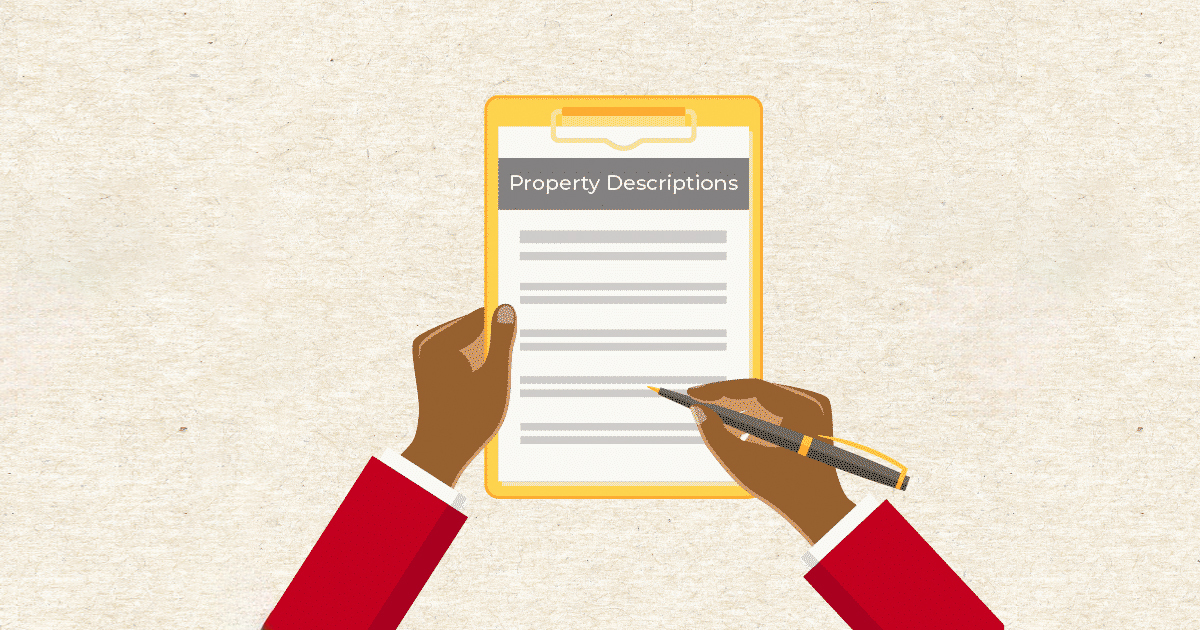- Having a good property description is key for any real estate agent or anyone selling a property
- Does the headline make them want to click on the property? You want something that makes someone stop scrolling and say, “Tell me more”
- A good description goes beyond listing features, it tells a story. It helps the reader connect emotionally by allowing them to imagine what it would be like to live there.
- Photos play a crucial role in giving perspective to property seekers. Remember, you are their eyes.
Having a good property description is key for any real estate agent or anyone selling a property. It’s one of the most effective forms of marketing. You need to capture the attention of your target audience and make them feel as though they’ve already walked through the space, even before they’ve seen it in person.
Writing a strong property description isn’t necessarily difficult, but it’s important not to underestimate the effort it requires. There’s real power in how you describe a property. That’s why it’s essential to highlight even the smallest details—you never know what might resonate most with a potential buyer.
It’s not just about throwing in a heading and a few lines and expecting the leads to start pouring in. Each section of the description deserves your time and attention. Your goal is to help readers visualise what it would feel like to live or work in the space, from start to finish.
There’s an art to writing property descriptions that sell and we’re going to let you in on exactly how to do it. Below is the property description format to follow.
Table of Contents
1. Start with a captivating headline

You can’t make the first impression twice, so it better be good. When searching for a property, the headline is the first thing people see—that short introductory text, usually accompanied by compelling property images. Does the headline make them want to click on the property? You want something that makes someone stop scrolling and say, “Tell me more” . It should highlight a key selling point—whether it’s the location, a unique feature, or the lifestyle the property offers.
A great headline sets the tone for the rest of your description, so make it count.
What makes a headline stand out?
A headline that stand out should be specific, clear, and compelling. It’s not just about grabbing attention, it’s about attracting the right audience for your property. The more relevant details you include upfront, the more likely you are to connect with serious buyers or tenants.
Include key features like:
- The type and size of the property
- The location
- Who you’re targeting (e.g. families, young professionals, investors)
- Any unique selling point, like financing options or extra amenities
Here are a couple of examples:
- “Mixed-Use Property for Sale With Financing in Garden City” – This highlights the property type, location, and an attractive benefit.
- “Spacious 1-Bedroom for Rent in Kilimani – Ideal for Young Professionals” – Clear, targeted, and paints a lifestyle picture.
The goal is to make it easy for someone scrolling to immediately know what’s on offer—and whether it’s for them. A little specificity goes a long way.
2. Share a story in the description section

This is the next important step in your property description. It’s where most people focus their attention after reading the headline. A good description goes beyond listing features, it tells a story. It helps the reader connect emotionally by allowing them to imagine what it would be like to live there.
Before investing in real estate, people take their time to make the right decision. As an agent or developer, you’re not just looking for a tenant or buyer, you’re guiding someone in their journey to find a place they can call home.
READ ALSO: Pros and Cons of Investing in Real Estate in Kenya
This is the section where you should include the main features of the property: size, number of bedrooms and bathrooms, location, and any extras like internet connection, garden, gym, swimming pool, and so on. Your description should leave the reader curious enough to want to know more. Don’t be afraid to get creative here.
Here’s an example:
“X Apartments has a manicured landscape with ample parking space that accommodates up to 20 vehicles. The property entrance features a long driveway leading to the main door, offering privacy and shielding you from the roadside noise. The swimming pool provides the perfect setting to host parties with friends and loved ones. Just beside it is a newly constructed gym, ideal for your daily workouts.”
3. Take Clear Photos
Photos play a crucial role in giving perspective to property seekers. Remember, you are their eyes. Your listing photos give potential buyers or renters a visual feel of the property before they ever visit in person. That’s why it’s important to take your time and capture high-quality images of the most appealing and essential parts of the house. Well-taken photos can spark interest and entice people to reach out for more information. see how your property looks like before they can visit the place physically. It is important to spend time taking good photos of the most important parts of the house to entice people to give you a call to inquire further.
4. Location. Location. Location.

Location is everything and we cannot emphasise this enough. Remember, you’re not just selling a property, you’re also selling the neighbourhood. That’s why it’s crucial to include details about the area, its surroundings, and the type of environment the property is in. Mention nearby amenities such as schools, malls, hospitals, restaurants, public transport options, or parks.
Different property seekers have different priorities, some might be looking for a family-friendly area, others might value convenience or vibrant nightlife. So make sure to highlight everything that could appeal to your target audience. The more informative and relatable your description is, the more likely you are to attract the right interest.
5. The Call to Action
This is the part many people forget—the call to action. Once someone has read through your property description, what should they do next? This is your chance to guide them. Do you have a show house ready for viewing? Do you want them to call, send an inquiry, or book a site visit?
A clear call to action helps increase quality leads for your property. It’s not just about getting attention, it’s about getting the right attention. You’re better off receiving a few solid inquiries that convert than hundreds of unqualified ones that waste your time during follow-up. Always remember: quality over quantity.
Conclusion
Writing a great property description is more than just listing features, it’s about telling a story, sparking curiosity, and helping potential buyers or renters see themselves in the space. From crafting a compelling headline to showcasing the best features, highlighting the location, and ending with a clear call to action, every section plays a key role in attracting the right audience.
Take your time, be intentional, and always aim to connect with your reader. The effort you put into your property description could be the difference between a listing that gets ignored and one that gets serious inquiries. Happy selling!
READ ALSO: Tips to Help You Become a Better Real Estate Agent



